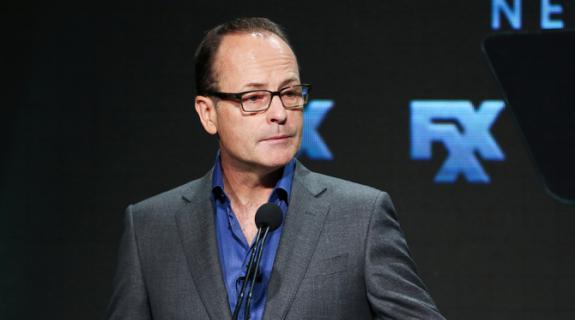Looks like there’s a ways to go before we reach true peak TV, but the TV industry is definitely headed there, said FX Chief John Landgraf, originator of the term one year ago.
According to Landgraf and his research team at FX, the estimated number of original scripted series produced in 2015 was 419. So far this year, there have been 322 produced, up 6 percent from 304 last year at this time.
“What’s driving that increase are the streaming services,” he said. Attendees of TCA’s panels dedicated to those services are well aware of how many new series the likes of Amazon, Crackle, Hulu and Netflix are teeing up, but according to Landgraf, the online services alone are producing more than 130 original series this year alone.
Of those, 71 are on Netflix and that doesn’t count series produced in foreign territories and imported by Netflix to air in the U.S., such as Marseilles, starring Gerard Depardieu.
“Netflix can’t keep doubling and doubling again their producing because the entire planet’s surface would be covered by their TV shows,” said Landgraf, who also warned that Netflix could be going for a programming monopoly.
That’s in addition to 150 original scripted series airing on broadcast networks, 50 on pay cable and 180 on basic cable, said Landgraf, and doesn’t include unscripted programming, news or sports.

“The total number of adult English-language scripted series during this full year should be in the range of 440 to 450 series,” said Landgraf, noting he expects that number to climb to 500 original scripted series in 2017. “It now seems clear that at a minimum that peak will be hit in 2017.
“I was wrong in my estimate of the timing. I didn’t understand last year that Netflix was going to try to compete with the entire global MVPD system. But I still think we’ll hit a peak in the scripted series business in the next 2 ½ years and then decline. I don’t think we’re in a bubble that’s going to pop. I think we’re ballooning into a condition of oversupply that will eventually decline.”
Moreover, the cost of producing these original scripted series also is increasing, with the average cost of producing and marketing an hour of television rising 20 percent to more than $4 million. While some shows – HBO’s Game of Thrones, for example – are produced for much more, other shows are produced for much less. Still, only the top 20 percent of shows on television are seen by average audiences of 10 million or more people, while the bottom 20 percent of shows are seen by an average of 380,000 people.
“If you look at all series for which we can see ratings – the top quintile of shows averaged 10.5 million viewers, while the bottom quintile averaged 380,000. In the second quintile, it’s 4.6 million and in the fourth quintile, it’s an average of 1.1 million viewers per show,” Landgraf said. “There’s a really big difference between the top 20 percent and the bottom. You can find ways to pay for anything in the top 20 to 60 percent, especially if you own it. But there still has to be a whole lot of TV shows that are losing a ton of money.”
[Image courtesy of Variety]
Tags:













































__twocolumncontent.jpg)











